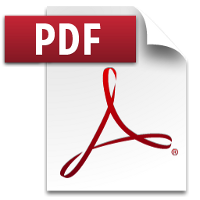 Conversion of South African Special Risks Insurance Association, 1998
Conversion of South African Special Risks Insurance Association, 1998
R 385
Perishable Products Export Control Act, 1983 (Act No. 9 of 1983)RegulationsRegulations relating to the Export of Perishable Products, 2025 - effective July 2025Chapter 8: Post-Harvest Treatment, Loading and Carrying InstructionsPart C: Equipment and Devices for In-transit Temperature Monitoring and the Exporter and/or Cold Chain Service Provider Responsibility56. Requirements for equipment and devices for in-transit temperature monitoring and the Exporter and/or Cold Chain Service Provider Responsibility |
| (1) | It is the responsibility of the exporter and/or cold chain service provider (including but not limited to shipping lines or agents, as the case may be) and not the Board, to ensure that: |
| (a) | the appropriate in-transit temperature protocol, for the relevant Cold Treatment Market, is identified and selected; |
| (b) | all temperature monitoring devices utilised for a consignment of a perishable product are of a type certified for the purpose by the Board, are valid for the relevant in-transit period, and in good condition and working order; |
| (c) | all temperature monitoring devices to be utilised for a consignment of a perishable product are appropriately calibrated/verified and bear an identification number and calibration certificate; |
| (d) | all temperature monitoring devices to be utilised for a consignment of a perishable product are activated in the correct manner; |
| (e) | the appropriate number of temperature monitoring devices, positioned in the required location/s for each consignment, are adhered to; and |
| (f) | the set point and ventilation setting of the container has been verified. |
| (2) | A representative of the exporter and/or cold chain service provider (as the case may be) shall be present when the representative of the Board performs the functions set out in paragraphs (d), (e) and (f) of sub-regulation (1), and shall make themselves available to countersign any documentation required for the verification thereof. |
| (3) | The exporter and/or cold chain service provider (as the case may be) is solely responsible for any malfunction or failure of any temperature monitoring device, or the incorrect calibration, setting, activation or placing of any temperature monitoring device, or a failure to adhere in any respect to the applicable temperature protocol. |